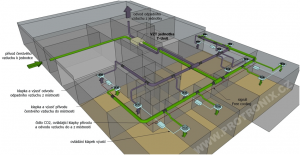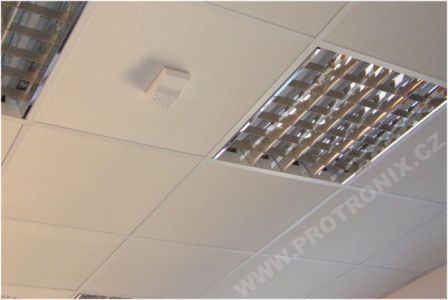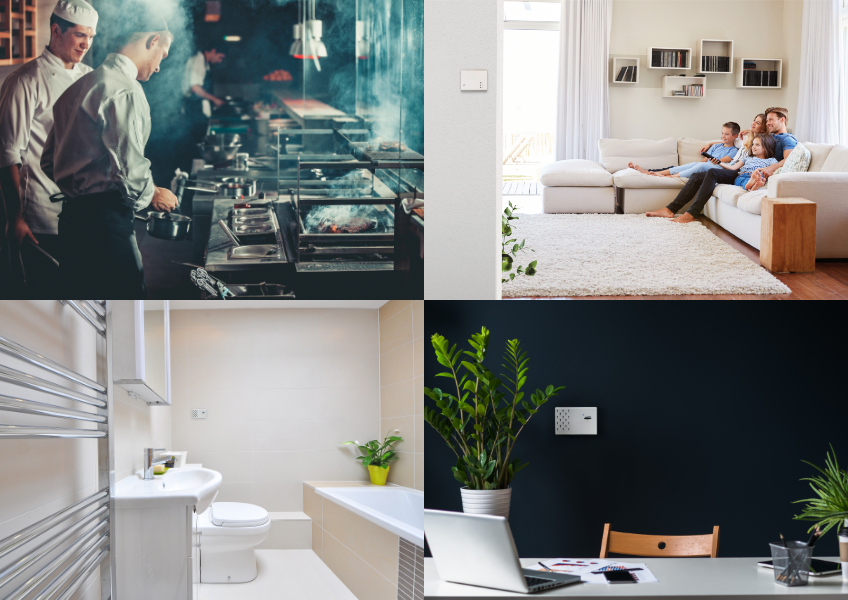The heater is always on and the window above it is open because the room is unbreathable! Or a closed window, so that the heating is not unnecessary, but the air is such that it is impossible to be in the room for long periods of time. Do you know these situations? And do you know what smart ventilation is?
Save money with smart ventilation
A sufficient supply of fresh air is a necessary condition for life. If a person has no air supply at all, he loses consciousness after a few minutes and subsequently dies. Everyone is aware of this fact, but does everyone also realize the consequences of breathing poor quality air for a long time?
90% of the time we’re locked inside
Exhaled air causes fatigue and dullness, which naturally reduces performance and concentration. Yet most people spend most of their time in environments with just such air. Children are cooped up half the day in schools, where CO2 levels are often in the risky range, adults are at work, usually sitting in closed offices with other colleagues. During the day, if these rooms are not ventilated, the air quality deteriorates rapidly. At home, people sometimes ventilate during the day, but close the windows at night – especially in winter – and wake up tired and with a headache in the morning. Again, this is due to the exhaled air.
Forced ventilation
The solution would be regular ventilation – once an hour, open a window for a while. During the day, if you do not forget, this can be done, but hardly at night. Then you should use a much simpler solution – a forced or combined direct ventilation system.
Forced ventilation systems usually work on the basis of so-called time control, which means that the volume of air exchanged depends on time intervals. In this case, it can sometimes happen that air is exchanged more intensively than is necessary in a given situation. This is the downside of controlled ventilation – it leads to overdrying and also wastes energy if the air is exchanged more frequently than necessary. However, even this single disadvantage can be solved by a more economical way of ventilation – ventilation controlled by actual need.
Ventilation controlled by actual need
An interesting solution, which is not yet so common in our country, is a ventilation system that is controlled by the actual need. What do you mean by “actual need”? Simply, it is the necessary amount of air that needs to be brought into the interior depending on the real requirements. Sensors are installed inside the ventilated space to monitor the indoor air quality. Based on these values, the ventilation system is then controlled to ensure that enough fresh air is brought in.
Air quality detected by CO2 concentration sensors
The idea of a space ventilated without human intervention and, moreover, according to real needs is more than appealing. So what can such a ventilation system offer you?
The fresh air in the exterior contains about 78% nitrogen, 21% oxygen, 0.4% water vapour, 0.04% carbon dioxide, the rest is made up of rare gases and other components. Indoors, it is the carbon dioxide level that increases due to the presence of people and other events. Therefore, carbon dioxide is a useful indicator for determining indoor air quality, mainly because it takes into account the number of people.
Space where CO2 concentration is not high
In addition to the level of carbon dioxide in the room, the air quality is also affected by the amount of bacteria, ammonia and other pollutants. Therefore, other types of sensors have been developed for different rooms with different sources of air pollution. These are VOC (volatile organic compound) sensors, which are mainly used in kitchens, toilets, cloakrooms, …
Another type of sensors are SMOKE sensors, which are broad-spectrum sensors that, among other things, can measure the concentration of hydrogen, which is the basic component of cigarette smoke. They can assess how smoky a room is and then use this value to optimise ventilation.
Smart ventilation = energy savings
Energy savings are achieved because, unlike a time-controlled ventilation system, this type of ventilation is controlled according to the actual demand. Ventilation therefore only runs when ventilation is really needed, and only at the optimum capacity determined by the current level of air pollution.
Where can this ventilation system find its application?
In the first place, office buildings, schools and other buildings where the number of people changes over time. But is this type of ventilation also suitable for the family home? The answer is clearly yes. The advantage is that with heat recovery ventilation there is no risk of unnecessary drying of the building in winter.
How to use smart ventilation if you don’t have ventilation or heat recovery?
In this case, it is advisable to recommend ventilation at more regular intervals for a few minutes. The number of people in the room must also be taken into account. It would also be advisable to monitor the optimum temperature. Again, an air quality sensor can monitor all these parameters for you. The ZG106 portable sensor can monitor temperature and CO2 concentration and alerts you with an acoustic or visual signal if the user-set values are exceeded.





